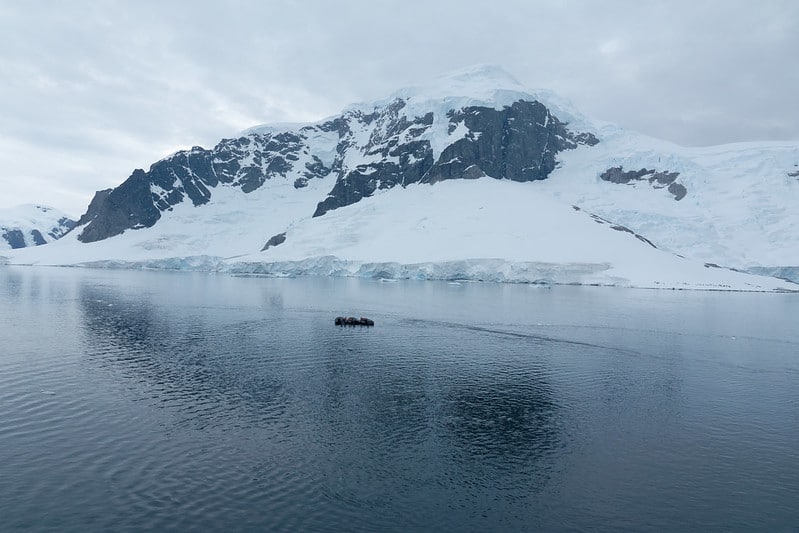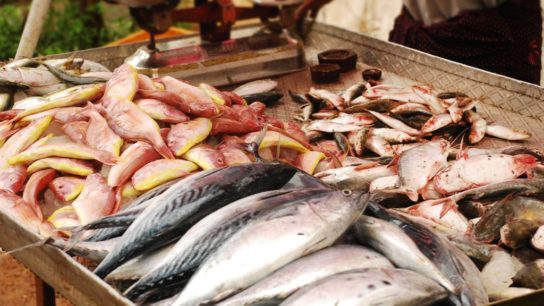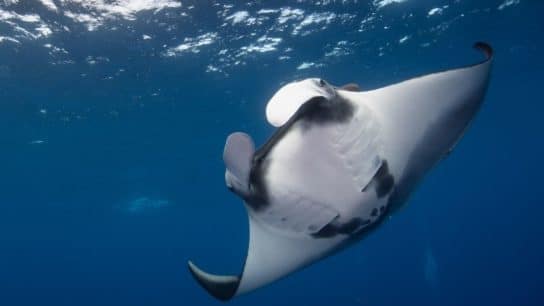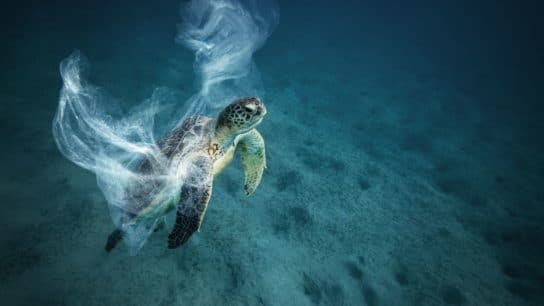Ice melt from Antarctica is increasing at an alarming rate, so much so that by 2100, Antarctic melting alone could lead to more than 40cm of sea level rise. However, sea levels are likely to rise more than this because as the ocean expands as it warms (thermal expansion), this could increase sea levels by a further 25cm. Sea level rise is the main effect we think of when we think of the melting of the Antarctic ice sheet. However, it is less known that there are minerals, like iron, that are trapped in the ice sheet which enter the oceans when ice melt occurs. If a lot of ice melts and enters the oceans with the trapped minerals, there will be an increase in the organisms in the ocean which require these minerals. This can be both a good and a bad thing. It can be positive if it leads to an increase in a species that doesn’t harm other organisms, however it can be negative when the organism in the ocean uses up too much oxygen for example.
—
Recently, jarosite, which is a yellow-brown mineral, first discovered on Mars in 2004, was found inside an Antarctic ice sheet core. In order to form, jarosite requires water, iron, sulphate, potassium and acidic conditions. This is an important discovery as the science about iron within the Antarctic ice sheet is currently ongoing. As the water surrounding Antarctica has limited amounts of iron, this means that as the Antarctic ice sheet melts and releases more iron into the ocean, these waters will no longer be iron limited. This will likely lead to more primary production in the waters, causing more phytoplankton to grow, which could lead to oxygen deprivation for other organisms and species.
You might also like: Sea Level Rise is Becoming Faster Than Most Pessimistic Forecasts

Fig 1 – Jarosite.
There are both positive and negative effects of increasing the amount of iron in the ocean (a process which is called iron fertilisation).
What does this increased iron in the ocean mean?
- More carbon could be stored in the deep ocean from the atmosphere. This is unlikely to make a large difference to the amount of carbon stored in the deep ocean because there is already enough iron for the microbes in the ocean to survive. Therefore, extra might not be used up.
- Changes in phytoplankton in the oceans and bacteria that feed on them. All phytoplankton need iron to photosynthesise however, some already have enough of it. Therefore, the phytoplankton which require and make use of the iron released from ice melt will grow, which will lead to more bacteria which feed on the type of phytoplankton which have just gained the iron they need to flourish.
- Fish stocks could improve as there will be more phytoplankton for fish to feed on. However, there is an equal chance that fish stocks could decrease. This is because we don’t know which food chain pathways will be favoured in an increased iron scenario. If algal blooms occur from the increased iron, fish stocks would decrease because the algae would use up all the oxygen in the waters, leaving none for the fish.
- Iron fertilisation could impact other dissolved nutrients in the ocean. This would occur if more phytoplankton were to grow. The increased amount of phytoplankton would require more nutrients, which would remove those nutrients from the water, making it harder for fish and other organisms to survive.
These are just some of the impacts that could occur from the melting of the Antarctic ice sheet due to iron fertilisation. However, the extent to which each might occur is uncertain. The small amount of iron that has been added to the ocean by ice melt from Antarctica for thousands of years is a good thing as it provides the iron necessary for phytoplankton. However, large increases, such as what would happen in the medium/worst case melt scenarios would likely go well beyond this optimum, necessary amount of iron leading to the impacts mentioned above. Therefore, it is important for scientists to keep an eye on what is happening in terms of iron release into the oceans as we are unsure what scenario will occur.
Featured image by: Flickr













